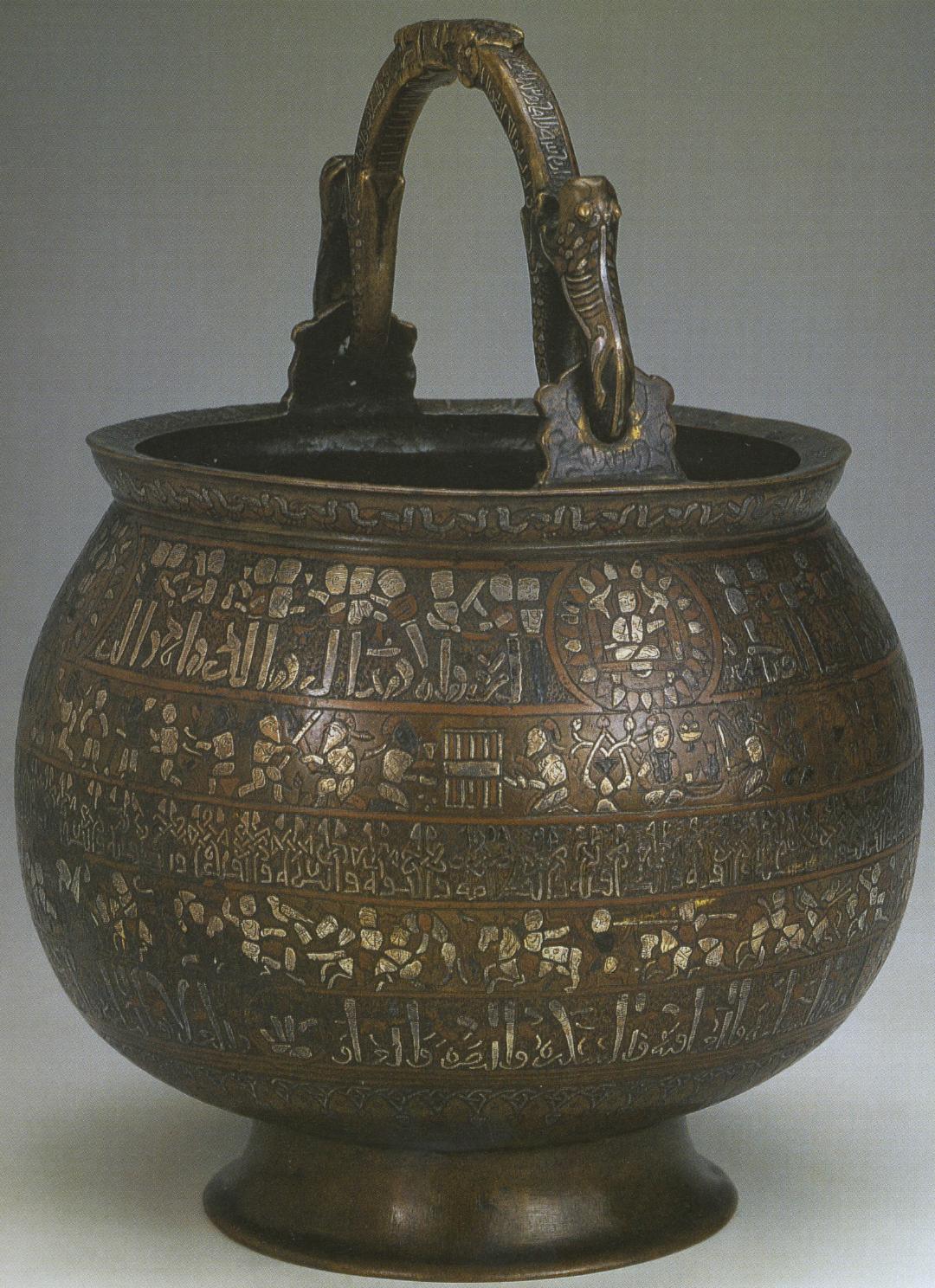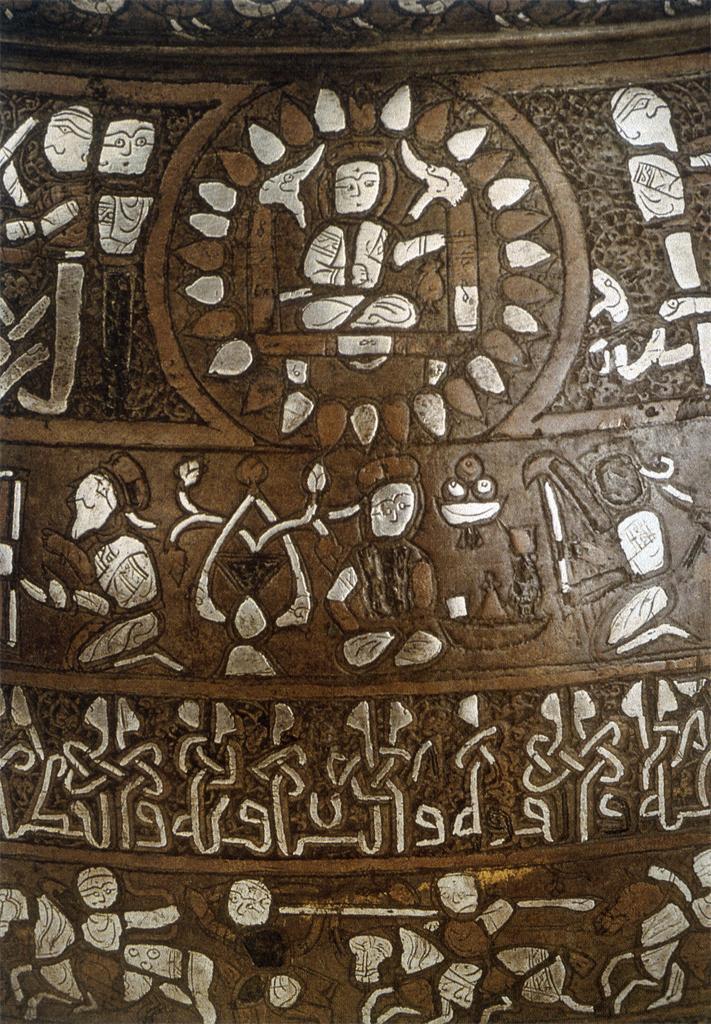
Find the perfect fit with Amazon Prime. Try Before You Buy.
The Bobrinski Bucket
Ghūrid Afghanistān, 1163 AD



Bobrinski Bucket, 1163, Herat
Dated, tells us where it was made and about the commission; probably used to be taken to the bath house as Islam is theologically against gold and silver vessels; inscriptions alternating with figural scenes (which speak to you in the first person); on the rim - dedicatory inscription in Persian. Bronze, inlaid with silver and copper, incision on the silver inlay to make faces, etc.
Source: StudyBlue

Referenced as figure 368 in The military technology of classical Islam by D Nicolle
368. Bronze cauldron, The Bobrinski Bucket, 1163 AD, Harāt, Hermitage, Leningrad (Ric I).
pp 398-399. Very little pictorial evidence survives from the Ghūrid era, although one of the finest pieces of Muslim metalwork was made in the city of Hirāt at a time when both the Saljūqs of Iran and the Ghūrids of Afghanistān were reeling before a new wave of Ghuzz Turkish nomads. This metal cauldron, known as the Bobrinski bucket, does show a solitary soldier with a curved sword, perhaps a galāchūr, battling against two horsemen (Fig. 368). He may, however, himself be a dismounted horseman.